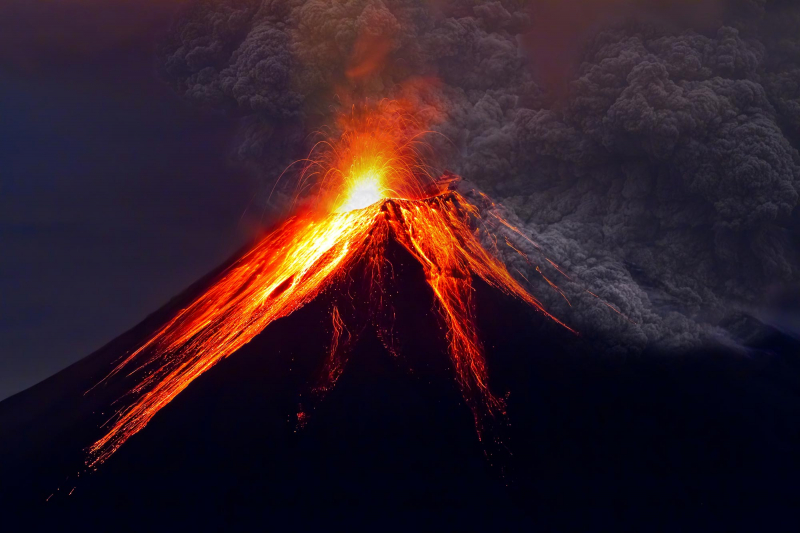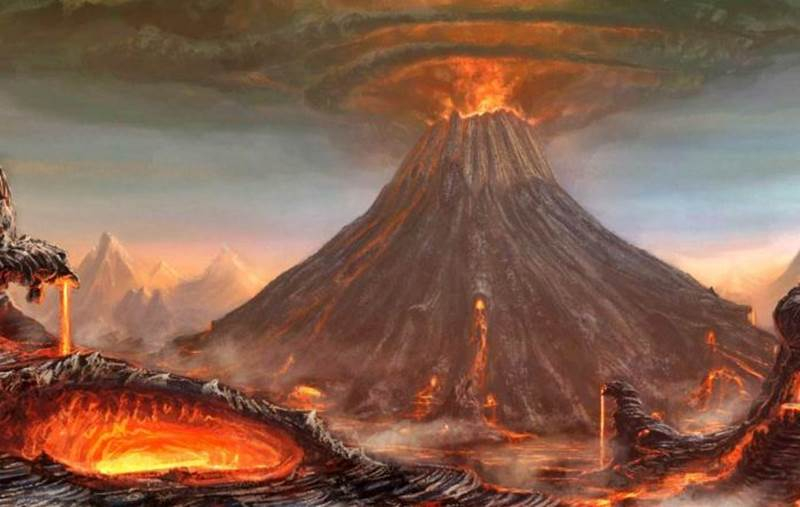Temperatures in the area of Mt. Tambora were from 700 to 850 °C (1,300-1,600 °F)
Before 1815, Mount Tambora was dormant for numerous centuries due to the gradual cooling of hydrous magma in its locked magma chamber. Exsolution of a high-pressure fluid magma created after cooling and crystallization of the magma inside the chamber at depths ranging from 1.5 to 4.5 km (5,000 to 15,000 ft). The chamber was over-pressurized by around 4,000-5,000 bar (400-500 MPa; 58,000-73,000 psi), and temperatures in the area of Mt. Tambora were from 700 to 850 °C (1,300-1,600 °F). The volcano began to rumble and emitted a dark cloud in 1812. On 5 April 1815, a massive eruption occurred, followed by thunderous detonation sounds audible in Makassar, Sulawesi, 380 km (240 mi), Batavia, Java, 1,260 km (780 mi), and Ternate, Molucca Islands, 1,400 km (870 mi). Volcanic ash began to descend in East Java on April 6, with minor detonation sounds lasting until April 10. On 10 April, what was initially considered to be the sound of firing guns was heard on Sumatra, more than 2,600 km (1,600 mi) away.
The eruptions accelerated at about 19:00 on April 10. Three plumes ascended to the surface and mingled. The entire mountain was transformed into a raging mass of "liquid fire". Around 20:00, pumice stones up to 20 cm (8 in) in diameter began to shower down, followed by ash around 21:00-22:00. On all sides of the peninsula, pyroclastic flows cascaded down the mountain to the sea, obliterating the settlement of Tambora. Explosions could be heard till the next evening, April 11th. The ash cloud reached West Java and South Sulawesi. A nitrous odor was detected in Batavia, and heavy tephra-tinged rain occurred, eventually clearing between April 11 and 17.










